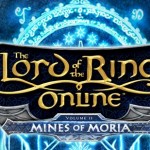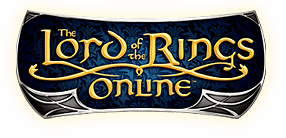 The Rise of Isengard is a full expansion for Lord of the Rings Online. It’s not free content, you have to pay for it, and it brings new levels (10 to be precise). That’s the same number of new levels that we got with Moria. Along with the levels, ROI brings three new areas, hundreds of quests, some new skills but more importantly, a complete revamp of character attributes and itemisation.
The Rise of Isengard is a full expansion for Lord of the Rings Online. It’s not free content, you have to pay for it, and it brings new levels (10 to be precise). That’s the same number of new levels that we got with Moria. Along with the levels, ROI brings three new areas, hundreds of quests, some new skills but more importantly, a complete revamp of character attributes and itemisation.
In the weeks and months up to the release of Isengard, classes underwent several changes, mostly to tweak unused skills or providing missing functionality. Isengard has built on that for most classes and in some cases, such as the Minstrel, has fundamentally changed their skill line-up. The overall intent appears to be to make the classes more balanced, and provide all players with a role in groups. I won’t cover the changes to all the classes here, there’s too much to go through, instead I’ll just describe my experience with Isengard and my overall enjoyment. The article got a bit long – sorry about that.
Getting There
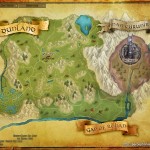 It’s traditional in LOTRO to move you between one area and the next using the Epic quest line. You don’t have to do it that way usually (Moria was an exception) but it’s clearly the intended or preferred method. Rise of Isengard is no different, you receive a letter, asking you to report to one of the Rangers in Enedwaith, eventually leading you into Dunland, which is the entry point to the Isengard expansion. A nice little unique element is that the Epic provides two routes via two different quest lines. Following one doesn’t exclude the other, since you can go back and retrace your steps, but it’s clearly designed to offer choice and prevent massive overcrowding. Dunland itself is south of Enedwaith, and the quests take you either directly south, or south-west and into the new land.
It’s traditional in LOTRO to move you between one area and the next using the Epic quest line. You don’t have to do it that way usually (Moria was an exception) but it’s clearly the intended or preferred method. Rise of Isengard is no different, you receive a letter, asking you to report to one of the Rangers in Enedwaith, eventually leading you into Dunland, which is the entry point to the Isengard expansion. A nice little unique element is that the Epic provides two routes via two different quest lines. Following one doesn’t exclude the other, since you can go back and retrace your steps, but it’s clearly designed to offer choice and prevent massive overcrowding. Dunland itself is south of Enedwaith, and the quests take you either directly south, or south-west and into the new land.
ROI is not as big as Moria. Let’s face it, Moria was just huge. It achieved that size through a combination of vertical movement, forced routes (making you track back and forward in a location to generate more distance within the same volume) and lots of distinct locations with their own look and feel. ROI doesn’t have that luxury, there are only 3 different major locations (described below), but the developers have tried hard to make them feel distinct.
Dunland
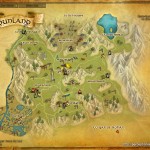 Dunland is a vast open area that you reach south of Enedwaith. It is populated very much like Enedwaith. There are a series of encampments with native men, who may be allies or enemies, spread throughout a mixture of terrains. Dunland is probably larger than Enedwaith overall, but not by a huge amount. The level of creatures and enemies increases from 65 to the high-70’s as you progress across the landscape. In order to make the area feel larger than it is, Turbine have employed the ‘having to run around large pieces of scenery like mountains’ so you need to cover more ground to get from A to B than it would take as the eagle flies. I understand the intent, but it can be frustrating to be standing right next to a quest ring or NPC only to find out you’re another 5 minutes away and have to circle back. Once again, almost every camp has a stable master, and Galtrev in the centre acts as the major hub for this region.
Dunland is a vast open area that you reach south of Enedwaith. It is populated very much like Enedwaith. There are a series of encampments with native men, who may be allies or enemies, spread throughout a mixture of terrains. Dunland is probably larger than Enedwaith overall, but not by a huge amount. The level of creatures and enemies increases from 65 to the high-70’s as you progress across the landscape. In order to make the area feel larger than it is, Turbine have employed the ‘having to run around large pieces of scenery like mountains’ so you need to cover more ground to get from A to B than it would take as the eagle flies. I understand the intent, but it can be frustrating to be standing right next to a quest ring or NPC only to find out you’re another 5 minutes away and have to circle back. Once again, almost every camp has a stable master, and Galtrev in the centre acts as the major hub for this region.
Gap of Rohan
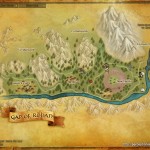 The Gap of Rohan looks very much like Dunland, but is significantly smaller. There are two or three major quest hubs with smaller quest NPC’s scattered throughout. The Gap is a really narrow strip of land, and is where you finally begin to engage full time with the Riders of Rohan.
The Gap of Rohan looks very much like Dunland, but is significantly smaller. There are two or three major quest hubs with smaller quest NPC’s scattered throughout. The Gap is a really narrow strip of land, and is where you finally begin to engage full time with the Riders of Rohan.
Isengard (Nan Curunir)
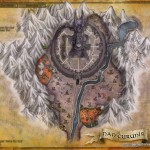 Isengard is split into three locations. The outskirts (Nan Curunir), the area just outside the tower, and the tower itself (accessed through various instances). For me, this is the most interesting set of locations in the game, although the outer terrain is also the most frustrating. There’s nothing worse in my view, than scenery you can see over, but can’t jump over or easily move through (in this cases, fallen trees that you can’t jump). As a consequence, moving around here can be very frustrating, but it’s worth it. It gives an excellent feeling of the bleak and terrible impact Saruman is having on the landscape and contrasts really well against the bright heather-strewn landscape of Dunland.
Isengard is split into three locations. The outskirts (Nan Curunir), the area just outside the tower, and the tower itself (accessed through various instances). For me, this is the most interesting set of locations in the game, although the outer terrain is also the most frustrating. There’s nothing worse in my view, than scenery you can see over, but can’t jump over or easily move through (in this cases, fallen trees that you can’t jump). As a consequence, moving around here can be very frustrating, but it’s worth it. It gives an excellent feeling of the bleak and terrible impact Saruman is having on the landscape and contrasts really well against the bright heather-strewn landscape of Dunland.
The Story
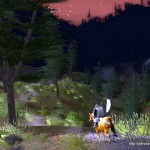 Rise of Isengard continues and apparently will conclude your journey with the Dunedain that started all those books and epic quests ago. Like Enedwaith, this story basically describes how you help the Rangers travel through hostile land, win over the trust of the native tribes (or not, as the case may be) and how you learn of Saruman’s treachery. There’s not much to say on it to be honest, it feels like a footnote in the epic quest so far, and not that epic, but it’s inoffensive and if you love the Rangers you’ll enjoy interacting with them again. It does have some tongue-in-cheek moments I think, for example, you get to watch the Rangers collecting wood, running errands and gathering apples just like they’ve made you do for the last hundred epic quests.
Rise of Isengard continues and apparently will conclude your journey with the Dunedain that started all those books and epic quests ago. Like Enedwaith, this story basically describes how you help the Rangers travel through hostile land, win over the trust of the native tribes (or not, as the case may be) and how you learn of Saruman’s treachery. There’s not much to say on it to be honest, it feels like a footnote in the epic quest so far, and not that epic, but it’s inoffensive and if you love the Rangers you’ll enjoy interacting with them again. It does have some tongue-in-cheek moments I think, for example, you get to watch the Rangers collecting wood, running errands and gathering apples just like they’ve made you do for the last hundred epic quests.
Outside of the epic specifically, Dunland is a land besieged and under the thrall of Saruman even if the natives don’t realise it. War is coming, none can avoid it, all must choose sides, and as usual you’re the catalyst in that process.
Reputation & Rewards
There are two reputations in Rise of Isengard. Men of Dunland and Theodred’s Riders. The early part of the expansion offers mostly Men of Dunland, with the later parts and the later epic providing Theodred’s. You’ll hit Kindred with Men of Dunland by just doing the quests, but you’ll need to work harder with the second reputation, repeating daily quests and doing as many tasks as you can find.
As is common now, both reputations have vendors, but this time the currency is regular money! No odd flowers, or strange branches or lumps of rock. The prices of some of the reputation items (and there are a lot) are quite interesting, some of them over 2gp. I like the new approach, the quests and mob drops give a good cash input, and you can earn cash anywhere else in the game you like and then come and buy reputation items.
The quest rewards are many and varied, and in part, drive the problem I have with itemisation (you’ll read that bit later). Many quests give a choice between three items, it may be 1 piece of jewellery, 1 piece of light armour and 1 cloak, or 1 piece of heavy armour, 1 piece of medium armour and 1 piece of jewellery. Because of the new itemisation, and the move away from 1 x light, 1 x medium, 1 x heavy or 3 pieces of jewellery, you have to pick your quest rewards carefully, plan ahead and hoard what you get in order to successfully use them as upgrades.
Questing
Questing in Rise of Isengard for the most part matches the experience in Enedwaith and Mirkwood. Quest hubs provide introduction quests, and then move you around the landscape. There’s a common theme in ROI, where a quest NPC will give you 3 quests, and then another 3 once those are complete. Many of the quests are standard fair, collecting items, killing the enemy, but there are signs that the Turbine team are trying to find new questing experiences. There’s a quest to return lost horses which was quite nice, and some of the instances have new mechanics (specifically where you lead teams of good guys against lots of bad guys). I’ll say no more so I don’t spoil some of the better instances.
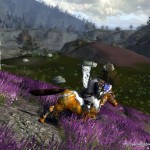 The vast majority of the quests are soloable at ‘even con’ (i.e. the same level as you), and the XP gains mean if you do all the quests you’ll level at the right speed. It’s a bit frustrating, I liked the old style quests where they were soloable with a challenge, much easier as a duo or trio, and the last stage tended to require a group. I know they’ve moved away from that format, but I really did prefer it. One very annoying feature in recent expansions is the exact opposite position, where the first few quests are out in the open, and then end in a solo instance. Some of those instances are uneven in difficulty and some classes might struggle, although after one or two goes you learn the best approach. ROI adds a new style of instance which ‘is designed to be solo but can be completed as a duo’. I’m really not sure what the intent was here, one of them configured like that doesn’t even involve any killing and it’s not consistent, some of the hardest are enforced solo, and others seem to randomly allow 2 people.
The vast majority of the quests are soloable at ‘even con’ (i.e. the same level as you), and the XP gains mean if you do all the quests you’ll level at the right speed. It’s a bit frustrating, I liked the old style quests where they were soloable with a challenge, much easier as a duo or trio, and the last stage tended to require a group. I know they’ve moved away from that format, but I really did prefer it. One very annoying feature in recent expansions is the exact opposite position, where the first few quests are out in the open, and then end in a solo instance. Some of those instances are uneven in difficulty and some classes might struggle, although after one or two goes you learn the best approach. ROI adds a new style of instance which ‘is designed to be solo but can be completed as a duo’. I’m really not sure what the intent was here, one of them configured like that doesn’t even involve any killing and it’s not consistent, some of the hardest are enforced solo, and others seem to randomly allow 2 people.
I would much prefer the Mirkwood approach where the final stage is actually a skirmish and so can be done with 1, 2, 3 or 6 people. My feeling is that Turbine ran out of time, and there are signs of rushed content all over the expansion.
Overall, the quests are like much of the rest of ROI – not hugely challenging and based on the concept of running around a lot.
The Enemy
Like killing Orcs? Like squishing Goblins? Enjoy defeating Trolls with 75k morale? You’ll love Isengard. It’s Orcs, Half-Orcs, Goblins, Trolls and Wargs. The staple diet of the Lord of the Rings enemy list. Those bad guys are interspersed with the usual wolves, some new lizard-like creature, massive turtles, undead, birds and native men. The enemy ranges from level 65 to 75 as you would expect, and I found them generally easier to kill than those in Moria. Some of them have a few tricks (watch out for the nasty fire DOT) but in general, there are few surprises.
The Good Guys
The good guys break down into three groups. Native people who you are working with to free from Saruman’s grasp, The Rangers you’ve been travelling with and the newly introduced Riders of Rohan. There’s the odd elf and dwarf thrown in for flavour, but that’s about it.
The Epic
Covered briefly in the story section above. The epic is okay, some of the quests are quite innovative, adding some functionality we’ve not seen before. There’s a definite sense of the team trying out new styles of quests and new ways to engage the characters. Overall though, it’s pretty boring in terms of actual content, once again we’re being point for the Rangers. I think Turbine recognise this, and they have announced we’ll be leaving the Rangers behind and instead, collecting bandages and digging up treasure troves for the Riders of Rohan going forward.
Crafting
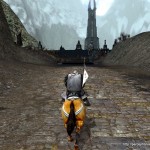 Isengard adds an entire new level to the crafting scheme, which I’m quite happy about. They’ve also taken the excellent decision to reduce the different kinds of raw craft resources for each craft, and then introduce new recipes to build intermediate ingredients. For example, rather than 3 or 4 types of metal (Khazad Iron, Khazad Tin, Khazad Gold, Khazad Copper) there is just one type – Skarn. That ore can be turned into low quality, medium quality or high quality ingots, using increasing amounts of the raw materials to do so (there’s also a shortcut, which I’ll leave you to discover). The end result is that resource collection is less complex and less frustrating (additionally improved by a huge increase in resource nodes), but recipes still have multiple layers and levels of complexity to work through. I love the new system frankly, and think it has greatly improved the crafting. I’d like to see them retrofit it for the previous levels but appreciate that would be a huge undertaking.
Isengard adds an entire new level to the crafting scheme, which I’m quite happy about. They’ve also taken the excellent decision to reduce the different kinds of raw craft resources for each craft, and then introduce new recipes to build intermediate ingredients. For example, rather than 3 or 4 types of metal (Khazad Iron, Khazad Tin, Khazad Gold, Khazad Copper) there is just one type – Skarn. That ore can be turned into low quality, medium quality or high quality ingots, using increasing amounts of the raw materials to do so (there’s also a shortcut, which I’ll leave you to discover). The end result is that resource collection is less complex and less frustrating (additionally improved by a huge increase in resource nodes), but recipes still have multiple layers and levels of complexity to work through. I love the new system frankly, and think it has greatly improved the crafting. I’d like to see them retrofit it for the previous levels but appreciate that would be a huge undertaking.
The new recipes are mostly interesting, although they suffer from my dislike of the new itemisation.
Along with the new craft level is a new craft guild reputation level and the associated tokens. That has definitely extended the time taken to move through Isengard because it gives you something else to focus on (some say time sink, others say interesting addition).
Some people are upset that you have to travel to Isengard to be able to complete recipes (I won’t give away why) which makes their tradeskill alts useless. Personally, I think if you’re going to learn how to craft in the style of The Westfold, it makes more sense that you have to travel there to learn it. My craft alts are all of an appropriate level anyway, so personally I think it’s a good thing.
New Levels & Skills
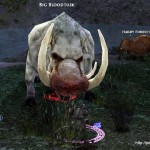 Ten more levels – not much to say except it’s nice to see the XP bar moving again after so long out of Mirkwood. Levelling is trivial, there’s almost no challenge in the game if you start the expansion at level 65, and it’s essentially a matter of just investing time to hit 75. I never died on my Guardian in the entire 10 levels, most of that was solo, and sometimes I found myself just fighting AFK while I made a drink.
Ten more levels – not much to say except it’s nice to see the XP bar moving again after so long out of Mirkwood. Levelling is trivial, there’s almost no challenge in the game if you start the expansion at level 65, and it’s essentially a matter of just investing time to hit 75. I never died on my Guardian in the entire 10 levels, most of that was solo, and sometimes I found myself just fighting AFK while I made a drink.
The new skills are a mix of nice and boring. Some classes get just upgrades, albeit with some interesting twists (for example, Guardians get no new skills, but their upgrades are interesting), while some classes get new skills which are a bit weak (Wardens get the ability to ‘store’ a gambit, but it’s not particularly exciting in the solo / group game). Isengard is lacking compared to previous expansions, Moria was far more progressive in terms of the new skills. Moria also felt tougher at the outset as well.
Character Stats
I won’t write a whole bunch on this – suffice to say Turbine have rationalised the character stats, and reduced the number of them down to a better level. It was getting crazy with 20 or 30 different statistics. I like the changes, I’m happy with the lumping together of some numbers.
Turbine have also added Finesse – a way to bypass your enemies defences. I’m not sure of the value of this for group / solo players, it still seems to be there primarily to make raid targets more challenging without a lot of gear upgrades (i.e. an enemy that has such high Block that you need 12,000 Finesse just to dent it). We’ll see if it survives longer than Radiance.
Legendary Items
Ten new levels of legendary items, and another revamp of the stats on relics thanks to the changes to the character stats. Nothing too exciting to cover, many people complained that for non-weapon LI’s there was no reason to upgrade away from their level 65 2nd age item. For weapons, you have to upgrade eventually just to get the DPS increase. Some of the artwork for the new items is quite nice, I prefer the one handed axes to the Mirkwood versions.
Itemisation
It will come as no surprise to my friends from in the game, that I think the itemisation changes in Rise of Isengard are a huge black spot on an other wise okay expansion. Turbine have taken the decision to polarise gear choice. Items now provide large bonuses to a small selection of character stats. For example, you may get +89 Vitality and +54 Might on a breastplate, but almost nothing else, or a neck item will have +50 Will, +50 Vitality and +50 Fate.
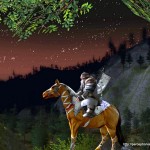 Read the developer diaries for the apparent reasoning behind this, the claim is that it makes gear choices more flexible. To me, it makes it significantly harder to manage your equipment choices. In the past, you could consider an item of equipment and compare it to your existing item and decide if it was an upgrade, a sidegrade or a downgrade. You could pretty much do that in isolation. Sure, sometimes you might want to augment a stat that you had lost elsewhere but gear tended to improve all your stats to some extent. Now when you see a chest piece with a huge armour increase, you can’t actually equip it without hugely impacting say your Power or Fate scores. Overall, a single piece might be a downgrade, and it’s only an upgrade if you also move around 3 or 4 other pieces of gear to compensate, or re-trait, or change your relics.
Read the developer diaries for the apparent reasoning behind this, the claim is that it makes gear choices more flexible. To me, it makes it significantly harder to manage your equipment choices. In the past, you could consider an item of equipment and compare it to your existing item and decide if it was an upgrade, a sidegrade or a downgrade. You could pretty much do that in isolation. Sure, sometimes you might want to augment a stat that you had lost elsewhere but gear tended to improve all your stats to some extent. Now when you see a chest piece with a huge armour increase, you can’t actually equip it without hugely impacting say your Power or Fate scores. Overall, a single piece might be a downgrade, and it’s only an upgrade if you also move around 3 or 4 other pieces of gear to compensate, or re-trait, or change your relics.
Gear management has become a spreadsheet and calculator affair, rather than something you can just eyeball and get a good feeling about.
You can’t slowly, incremental upgrade your gear. This is especially true switching from pre-Isengard gear to the new structure. Next time it might be different, but this time the change is painfully difficult. If you get a piece of gear as a quest reward, and equip it, you will end up being worse off in some regards, and you will need to compensate. If you are offered the choice between some Power heavy gear or some Morale heavy gear, you need to have a plan in mind otherwise you might choose Power gear only to be need to switch it out later when even more gear brings Power you don’t need. I refer to this as forcing Upgrade Cascades. You need to hoard rewards and gear and crafted items in case you need to radically re-arrange your gear to prevent the loss of some vital stats just to get a gain elsewhere.
What appears as a huge upgrade initially ends up being a trivial upgrade because you need to replace other gear to compensate.
Anyway, if I don’t stop it’ll end up being the whole article. My closing words, maybe I’m in the minority, maybe I think about this stuff too much, but I hate the new itemisation and the amount of work you will need to invest just to work out if a new piece of gear is an actual upgrade, and it has absolutely diminished my enjoyment of both RoI and LOTRO in general.
Is it any good?
So, here we are at last. Is it any good? I’ll damn it with faint praise, it’s okay. It’s nowhere near as iconic as Moria, it’s not as well put together as Mirkwood, it’s not as exciting as Moria either. It’s just okay, inoffensive, easy to progress through, offering very little challenge in-game. The greatest challenge is working out how to upgrade your gear. Some of the quests show a spark of originality, some succeed more than others, but many feel rushed and not quite finished.
Worst Bits?
Two things. Firstly, it’s too easy, there’s just no challenge. Secondly, there’s nothing to come back to later. There are 3- and 6-man instances in Moria and Mirkwood that I have still never finished and want to go back and complete. I’ve finished Isengard twice; everything except the raid. Even casual players will chew it up and then move on to another game.
Best Bits?
You get to kill a lot of Orcs.
I wanted much, much more from Rise of Isengard. Instead, I got an extension of Enedwaith; Forochel without the frost.

